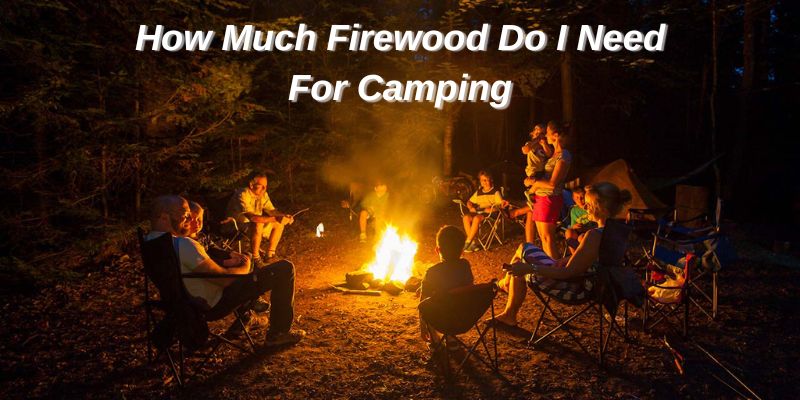The warmth of the campfire adds much more to your camping trip especially if you are camping in the winter season. Having a campfire outside your tent creates a cozy and joyous environment around your campsite. But what you want for having a great campfire at your campsite is the amount of firewood on the trip. You need to consider all the factors that can affect your firewood on the camping trip. Factors such as the duration of your stay, the climate, and the availability of other heat sources all play a role in choosing the right and durable firewood to have an enjoyable camping experience. In this article, we have gathered some data that will answer your question “How much firewood do I need for camping” and all those various factors that affect the quality of firewood on your trip.
Where To Get Firewood For Camping?
You can find firewood for camping at campgrounds, local suppliers, or by foraging in the woods.
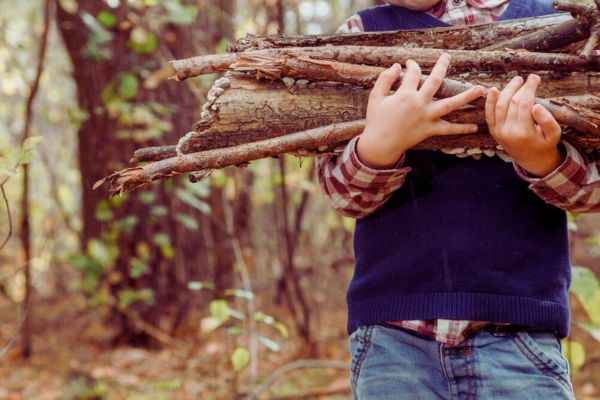
At Your Campground
If you’re traveling to an area that strictly prohibits bringing the wood with you from any other place, you can find the wood at the campground itself. To get firewood on the campground itself is the easiest way for any camper. Many campsites have designated areas where you can purchase bundles of firewood for a reasonable price. This can be proved convenient for the campers as they don’t have to carry a bulk of firewood with them while traveling.
Also, remember that not all campgrounds offer firewood for sale. You need to search for firewood by yourself from the area around you or find local vendors that sell firewood.
Local Firewood Suppliers
There are some local businesses set up in the area of your campsite that sell firewood. You can find these local vendors online or through inquiring at nearby stores. These local firewood suppliers offer wood to the people nearby who have no time or possible equipment to gather wood on their own.
Gathering Firewood In The Woods
Gathering Firewood on your own around the campsite can be fun sometimes but there are some things that need to be considered as well while gathering firewood. Some campsites do not offer to cut trees and harm other natural habitats to get the woods. So, try to keep this thing in mind when you collect wood around your campsite, look for dead or fallen trees that are dry and seasoned. Do not harm or cut fresh or new branches as this disturbs the ecosystem and natural habitat of that area.
Read More: Solo Tent Camping: A Guide to Lone Outdoor Adventures
Factors That Determine Your Firewood Needs

Let’s take a closer look here at all those factors that play their role in determining the amount of firewood needed on the trip:
1. Duration Of The Camping Trip
The duration of your camping trip directly affects the decision of the amount of firewood to take on your trip. If you are staying for long on your trip then you’ll need a large amount of firewood with you.
For example, someday you’ll be willing to cook a hot breakfast in the morning and build a campfire at night. In that case, you’ll need more firewood that day. On the other day, you are not in the mood for any breakfast but only a campfire at night, that day you’ll need less firewood. So, be careful of your daily firewood needs and determine if they will be the same every day and night.
2. Type Of Wood
First of all, ensure the type of wood that is available for you before buying it. Try to purchase extra units if the only source is available in your area so that it does not create any shortage of firewood.
Hickory and Oak are hardwoods and burn for a long duration as compared to softer woods like Pine and Fir. These woods burn for a short duration and require more amount of wood. So choose wisely what type of wood will be best suited for your trip.
3. Number Of People In Your Group
If you are planning to go camping with a group of people, you’ll need more firewood to build a campfire to make people gather around. But some of the campsites have a limit on how big of a fire you can build. So, be careful in making the decision to take the amount of firewood with you on the trip according to your camping site’s conditions and guidelines.
The basic formula of determining the amount of firewood according to the number of people is 8 bundles per day is considered for a group of up to 5 campers. If you have more people in your crew then you need to add more firewood.
4. Weather Conditions And Climate
Weather conditions and the climate of your campsite play a crucial role in determining the amount of firewood you will take on your trip.
For example, if you are camping in winter and place with a higher altitude then you’ll need more amount of firewood to build a campfire outside your tent to create a warm and cozy environment around your campsite. This will enhance your winter camping experience.
If you are camping in a milder or warmer climate then you will need to reduce the amount of firewood to take on the trip. There you’ll need the firewood only for cooking while camping and to create a cozy environment.
So, be careful to check the weather forecast of the place where you are going camping so that you can determine the type and amount of firewood according to the climate there.
5. Cooking Needs
If you are planning to cook all your meals on your own on the trip then you’ll need 4-5 extra bundles of firewood each day. Also, make sure that the firewood you have brought is hot and burns for a long so that you can prepare your whole food properly without any issues. It is an important factor to consider your cooking needs while camping in order to determine the amount of firewood you’ll need while camping.
How Much Firewood Do You Need for Camping?
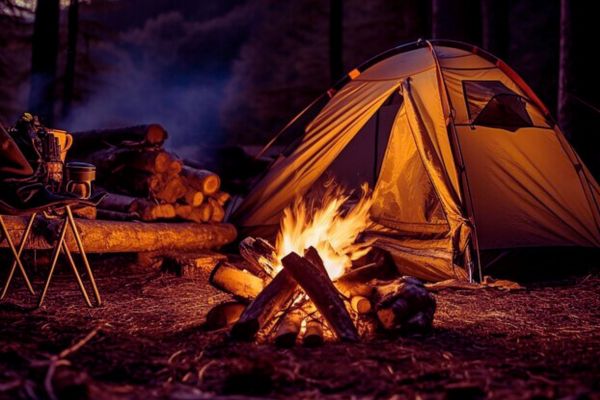
On average, you need 2 to 5 bundles of firewood per day for your campfire or about 1 bundle an hour for their campground campfire. Let’s understand through a chart showing a quick estimate of how much firewood you’ll need for camping:
| Total Campfire Duration Per Night | Amount of Firewood Required (Warmth) | Amount of Firewood Required (Cooking) |
| 1 hour | 1 bundle (4-5 logs) | 1 bundle (4-5 logs) |
| 2 hours | 1 to 2 bundles (4-10 logs) | 2 to 3 bundles (10-15 logs) |
| 4 hours | 2 to 4 bundles (10-20 logs) | 3 to 5 bundles (15-25 logs) |
| 6 hours | 4 to 6 bundles (20-30 logs) | 5 to 7 bundles (25-35 logs) |
| 8 hours | 6 to 8 bundles (30-40 logs) | 7 to 9 bundles (35-45 logs) |
- The average campfire burns approximately one hardwood bundle (about 1 cubic foot) an hour in a 2-3 foot wide firepit.
- Very soft firewood-like fir will burn twice as fast.
- To keep a crackling fire from morning to evening takes 10-20 bundles, but a small campfire can be maintained with 5-8 bundles per day.
1. Firewood for Winter Camping
The regions where firewood is the only source of heating will need 3-6 bundles of firewood in winter. A single cord or bundle is 128 cubic feet of firewood, which is enough to fit in a 4’ x 4’ x 8’ cube and weighs about 3,000 lb. on average.
In case you have hardwood to burn you’ll need less firewood as compared to the above-mentioned data. Highly efficient heating appliances and good hardwood can reduce the consumption of wood and provide a long and wonderful winter camping experience.
2. How to calculate the amount of Firewood needed in Winter Camping?
- First of all, find out how many gallons of fuel you used to heat.
- Now, multiply the number of gallons by the number of BTUs per gallon according to your fuel type. Record the obtained answer as the total BTUs you need to heat.
- Then, find the number of BTUs per bundle for the type of wood you’ll use to heat.
- Multiply that number by the efficiency of your wood stove or fireplace in decimal form. The resulting number is your wood-burning efficiency.
- Finally, divide the total BTUs you need by the wood-burning efficiency and round the answer up to the nearest whole number. The answer is how many cords or bundles you need per winter.
How Much Firewood is in a Bundle?
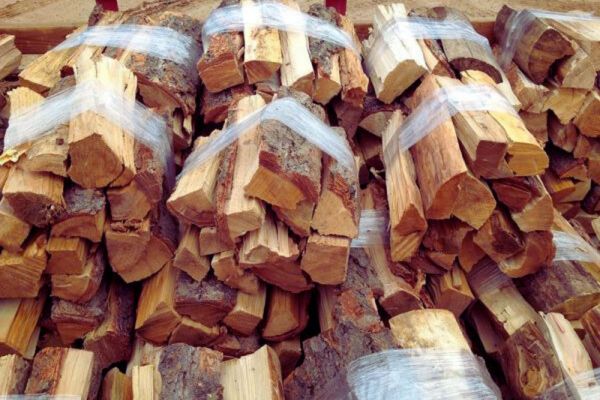
Generally, a bundle of firewood has 4-5 logs of firewood that are usually split into 8-12 sticks. The size of these sticks is 3-4 inches in diameter. To avoid any issues in carrying or transporting these sticks are wrapped in a net or a plastic bag.
The actual size of a bundle is between 0.65 and 0.75 cubic feet. The cost of these bundles can vary according to their size, quantity, and planning for a long cooking fire. These logs contain very minimal or no moisture. This is one of the great advantages of buying such bundles of fire logs.
Tips to Keep Your FireWood Dry for Camping
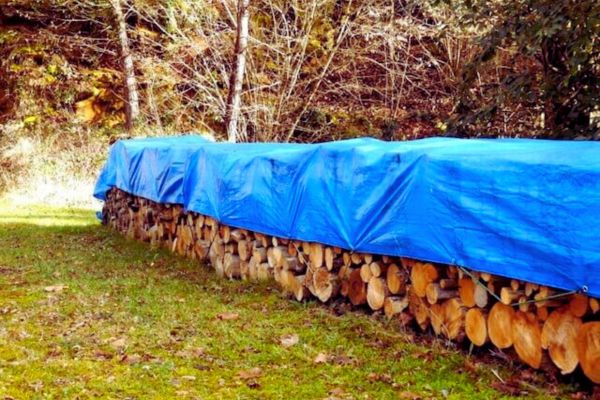
Enhancing your campfire experience on a camping trip is the foremost priority of any camper and for that, you need to keep your firewood dry and safe so that it can burn properly and give you the desired warmth and joyful camping environment. Here we have listed some tips that you need to remember to keep your firewood safe from catching moisture:
Choose the Right Wood
- Use seasoned or dried wood because that wood has very minimal or less moisture content than green or freshly cut wood.
- Try to choose hardwoods like oak, maple, or hickory. These woods burn better, for a longer duration, and produce less smoke than softwoods.
Elevate the Wood
Try to place your firewood at some height or under something, to prevent direct contact with the ground. This helps to minimize moisture absorption from the soil.
Cover the Woodpile
- Remember to use a waterproof tarp or some plastic sheet to cover the firewood bundles and ensure that your cover exceeds the size of the firewood stack to shield it from rain or snow.
- Create a slant on the top of the cover to allow water to run off easily.
Store Firewood in a Dry Place
- Always try your best to store your firewood in a dry area before even heading towards camping. If possible, keep it in a covered shed or garage until you’re ready to leave.
- After reaching the campsite, find some dry place to store your firewood to prevent it from catching any moisture which can create issues at the time of burning.
- Only 20 percent of moisture should a wood contain. This is the limit of moisture in firewood. If the limit is exceeded, the firewood will burn poorly and spoil your overall camping experience.
Keep Wood off the Ground
You can put the woodpile above the ground with the help of pallets, bricks, or other stable supports. This helps in reducing the moisture absorption by the wood.
Select a Good Campsite
After reaching the destination, find a campsite that provides natural shelter, such as trees or rock formations, so that the firewood remains in the shelter and is less exposed. A good campsite will help keep your firewood safe that you have brought all the way long to experience a wonderful winter camping.
Conclusion
Determining the type and quantity of firewood you should take on your camping trip completely depends on the factors that affect it the most. These factors are the duration of your trip, expected weather conditions, campfire size, cooking needs, local rules and regulations, wood type, and so on. To make your camping experience war, enjoyable and comfortable, especially in winter, you can choose hardwoods like hickory and oak that are durable and burn for a long time as compared to softwoods like pine and fir. Choose the firewood for your camping trip wisely and keep it safe and moisture-free so that it can burn properly and provide you with a better camping experience.
FAQs
What if I’m camping in an area with firewood restrictions?
If there are restrictions on collecting or transporting firewood in your camping area, it’s essential to comply with local regulations. In such cases, plan to purchase firewood locally. Be aware of any specific rules to prevent the spread of pests and diseases.
Can I use any type of wood for camping, or are there preferred types?
While you can use various types of wood for camping, hardwoods like oak and maple are often preferred. They burn longer and produce more heat. Consider the efficiency, weight, and bulkiness of the wood, especially if you need to transport it to your campsite.
Should I have a backup supply of firewood?
Yes, having a backup supply of firewood is advisable. Unexpected weather changes or other factors could affect your primary woodpile. A reserve ensures you won’t run out and helps you stay prepared for unforeseen circumstances.
Is it better to have more firewood than needed?
Yes, it’s advisable to calculate conservatively and have a bit more firewood than you think you’ll need. Unexpected factors, such as rain or a sudden drop in temperature, can increase your wood consumption. Having a surplus ensures you’ll have enough to meet your needs.
You may also like:

